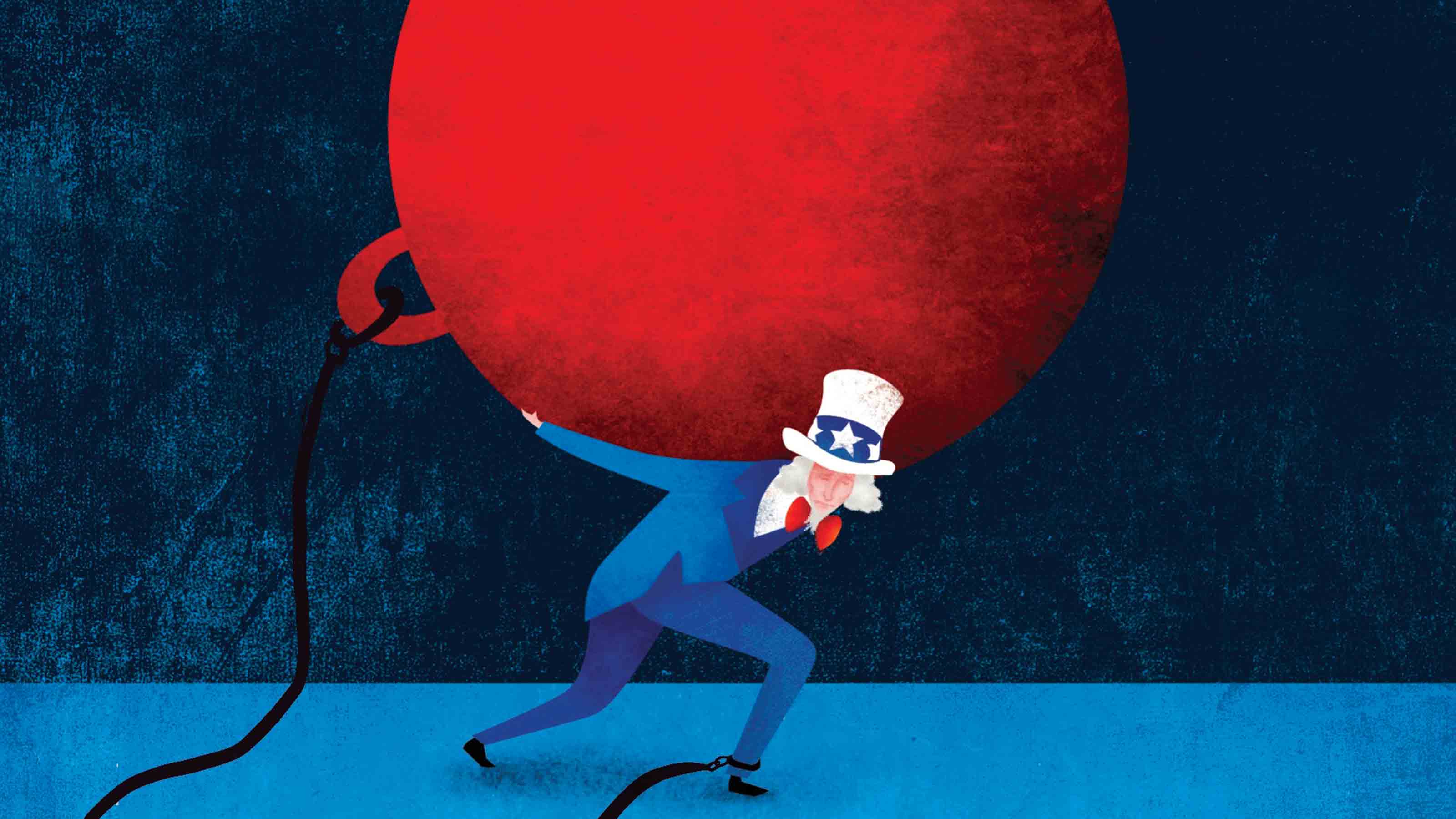Investing Lessons from the Great Recession
It's not that the rules changed. It's more that strategies for long-term growth have always been riskier than we like to think.

The economy appears to be on a gradual if jittery mend. Hiring is picking up, and dismissals are on the wane. Consumers are in a better mood, and American manufacturing is expanding at a healthy clip. The Federal Reserve Board is sticking to its support-the-economy monetary policy. And the stock market climbed 12.6 percent in the first three months of 2012, driving Standard & Poor's 500-stock index to post-2008 highs.
Progress remains highly uneven. The unusually warm winter weather may have pushed up some traditional spring sales into the first three months of 2012. The high price of oil and gasoline is weighing on consumers and business. Energy prices could head higher, along with escalating tensions with Iran. The housing market remains a burden on economic activity. And the European sovereign debt crisis simply won't go away. The latest focus of worry is on an indebted Spain (with occasional nods to Portugal and Ireland.)
Still, signs that the economy is improving make now an opportune time to take stock of the investing lessons learned over the past five turbulent years. It's an understatement to say it has been nerve-wracking managing our portfolios through a global credit crunch, a bear market, the Great Recession, the worst labor market since the 1930s, bank bailouts, the collapse of the housing market and an unprecedented monetary easing by the central bank. Yet the dynamic character of capitalism -- what economist Joseph Schumpeter aptly described as the "gales of creative destruction" -- means more recessions and bear markets (hopefully not as vicious) lurk in our future. The trick is for the 401(k) generation of investors to learn from the recent past to better navigate coming booms and busts.
From just $107.88 $24.99 for Kiplinger Personal Finance
Become a smarter, better informed investor. Subscribe from just $107.88 $24.99, plus get up to 4 Special Issues

Sign up for Kiplinger’s Free Newsletters
Profit and prosper with the best of expert advice on investing, taxes, retirement, personal finance and more - straight to your e-mail.
Profit and prosper with the best of expert advice - straight to your e-mail.
We've all heard and read suggestions that the market's message has been to toss aside traditional rules of investing and embrace a different set of insights, such as the demise of diversification and the triumph of market timing. However, what's striking with a five-year time horizon is how well the old rules for managing money hold up. We forget that these insights were forged during scary times, such as the Great Depression of the 1930s and the Great Inflation of the 1970s.
"The basic principles haven't changed," says Peng Chen, president of Morningstar's global investment management division. But he adds: "They do need some fine-tuning."
The first lesson is really a critical reminder, an insight shared by our grandparents and veteran financiers: Stocks are risky. Equities are riskier than bonds because bondholders have a senior claim on a company's or a nation's cash flow. Corporate profits and equity holders carry the brunt of losses in any downturn.
The inherent riskiness of stocks was downplayed during the great bull market of 1983 to 2000. Two bear markets in less than a decade are a stark reminder that markets go down as well as up. Paul Kaplan, Quantitative Research Director Morningstar Europe, lists 17 stock market declines that exceeded 20% from 1871 to 2009. Bonds have often outperformed stocks for ten-year periods and longer since 1871, including the past decade. "We're much more aware of the downside risk," says Ross Levin, a certified financial planner and head of Accredited Investors Inc.
Diversification pays. To be sure, diversification won't always act as a buffer against a financial crisis over a relatively short period of time, say, six months. But investing in a number of different asset classes will smooth out performance over time as some assets zig while others zag.
For example, over the past five years Standard & Poor's 500-stock index had an annualized total return of 1.07%, while Barclays U.S. Aggregate Government Treasury Long index sported a return of 9.87%. The insight of Don Quixote de la Mancha is still sage: "Tis the part of a wise man to keep himself today for tomorrow, and not venture all his eggs in one basket."
The "fine-tuning" lesson here is that diversification as a hedge isn't what it used to be, especially within a major asset class such as equities. International markets all plummeted during the global financial crisis. Stock markets have become more tightly integrated since the Berlin Wall came down and the mandarins of China embraced market reforms. There is less divergence and more convergence in the global economy. "Diversification within assets works to a lesser degree compared to 20 and 30 years ago," says Chen. "Europe won't behave differently as much from the U.S."
What about other common suggestions, such as dollar-cost averaging, periodically rebalancing your portfolio, and taking your age into account? All remain fundamentally sound. They are built on the insight that investing is a tough business, with both reward and risk. Leon Levy, the late legendary investor, wonderfully captured the idea in The Mind of Wall Street: "There is a genius on one side of every trade and a dolt on the other, but which is which does not become clear until much later."
The old ideas recognized that investing is as much psychological as it is analytical. Dollar-cost averaging is a tried-and-tested way of keeping the investing demons of fear and greed at bay. Rebalancing is a discipline for forcing investors to buy low and sell high.
Your age is a reminder that when it comes to your own life, investing for the long run has an expiration date. "In the long run, the best thing to do is to have a diversified portfolio adjusted as you age," says Eugene White, an economic historian at Rutgers University. Adds Ross Levin of Accredited Investors: "You don't want to be loaded up with Nasdaq stocks at age 64."
Much has changed in the markets: high-speed computerized trading, hedge fund buccaneers, sophisticated quantitative models, and the global slicing and dicing of derivative securities. Meanwhile, we have to save for our retirement, our children's college education and other critical goals. Let's not forget that the traditional notions of how to cope with the difficult trade-offs between risk and return remain as good a starting place as any for creating a portfolio.
Profit and prosper with the best of Kiplinger's advice on investing, taxes, retirement, personal finance and much more. Delivered daily. Enter your email in the box and click Sign Me Up.

-
 Is Your Emergency Fund Running Low? Here's How to Bulk It Up
Is Your Emergency Fund Running Low? Here's How to Bulk It UpIf you're struggling right now, you're not alone. Here's how you can identify financial issues, implement a budget and prioritize rebuilding your emergency fund.
-
 Guide to How All-Assets Planning Offers a Better Retirement
Guide to How All-Assets Planning Offers a Better RetirementAn "all-asset" strategy would integrate housing wealth and annuities with traditional investments to generate more income and liquid savings for retirees.
-
 Forget FIRE: Why ‘FILE’ Is the Smarter Move for Child-Free DINKs
Forget FIRE: Why ‘FILE’ Is the Smarter Move for Child-Free DINKsHow shifting from "Retiring Early" to "Living Early" allows child-free adults to enjoy their wealth while they’re still young enough to use it.
-
 Federal Debt: A Heavy Load
Federal Debt: A Heavy LoadEconomic Forecasts The debt continues to grow, but record-low interest rates could ease the long-term damage.
-
 Is a Recession Imminent?
Is a Recession Imminent?Economic Forecasts Shoppers will have to carry the load for now because weak business investment shows no sign of perking up anytime soon. Odds are, they’ll be able to.
-
 3 Factors That Could Drive the Next Recession
3 Factors That Could Drive the Next RecessionEconomic Forecasts The economy is humming along nicely, but how long can the good times continue?
-
 Savers Feel the Pain of Low Interest Rates
Savers Feel the Pain of Low Interest RatesMaking Your Money Last The Fed's low-rate policy has cost U.S. savers $470 billion.
-
 Is the Stock Market Signaling a Recession Ahead?
Is the Stock Market Signaling a Recession Ahead?Economic Forecasts Sinking stocks don't necessarily presage an economic downturn.
-
 U.S. Manufacturers on a Roll
U.S. Manufacturers on a RollEconomic Forecasts Cheap energy and an improving economy will keep manufacturing growing at a better-than-average rate.
-
Next Rise in Interest Rates Will Come in 2015
business Even when rates finally do head up, they won't zoom out of control. A progressive series of stair steps is more like it.
-
Fracking Boom Spells New Tech Investments
Economic Forecasts Solutions to energy and safety concerns will be in hot demand.